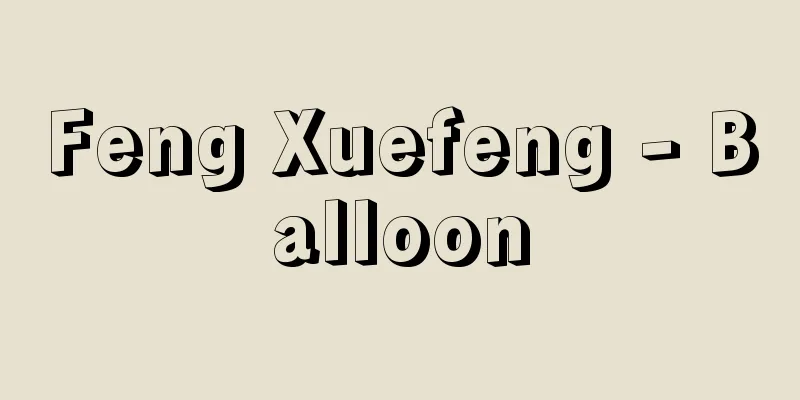Headhunting - Headhunting

|
A custom of taking the heads of people outside of one's own group. Taking a head means killing, but the purpose is not murder but taking the head. In other words, the common idea behind headhunting is that spirits reside in human heads, and so one tries to obtain the spirits. In other words, the logic is that one wants to manipulate fate to one's advantage and ward off disasters, and in order to do so one needs to increase spiritual power, and in order to increase it one needs to gather spiritual power from outside one's own group, and as a way to do so, one hunts down the heads of people from other groups. Some places use the heads as they are, while others modify them. Processing was only done in places where it was believed that modifying the heads would not drive away the spirits. Examples of processing include scalps with hair still attached (scalping), "shrunken heads" made by the indigenous Jivaro of South America by removing the skull, and "head trophies" consisting of only the front half of a head and face excavated in the Paracas region of the Andes. Tribes that are semi-farming and semi-hunting often fight over territory, so the heads (spirits) of powerful enemies reduce the power of the other side and increase the spiritual power of one's own group. Heads are displayed at the entrance to the village, facing outwards, glaring at the enemy. In the society of the Paiwan mountain people of Taiwan, headhunting is mandatory at the coming-of-age ceremony. The heads collected in this way are lined up on a shelf and used as a kind of altar to pray for the prosperity of the village. Farmers believe that an increase in the number of spirits increases productivity, so heads are offered in rituals for bountiful crops, increased livestock production, and fertility among the tribesmen. The heads that were displayed for a certain period of time are either buried after a ritual to commemorate the deceased, or preserved as skulls. The Wa people of northern Myanmar (Burma) used to predict the size of the harvest by the position of the maggots on the heads placed in the fields. As mentioned above, headhunting was a custom that was widely practiced among agricultural and semi-agricultural peoples in India, Southeast Asia, the Philippines, Taiwan, and North and South America, but as cultures advanced, it gradually disappeared, and is now almost unheard of. [Mitsusada Fukasaku] [Reference] |Source: Shogakukan Encyclopedia Nipponica About Encyclopedia Nipponica Information | Legend |
|
自集団以外の者の首(頭部)をとる習俗。首をとるには殺すことになるが、目的は殺人ではなく首をとることである。いいかえれば、首狩りに共通する考えは、霊は人間の頭に宿るので、その霊を手に入れようとすることである。すなわち、自分たちに有利に運命を操作し除災招福をしたい、それには霊力の増強が必要である、増強するには自集団以外の霊力をも集めたい、その方法として他集団の者の首を狩り取ってくる、という論法である。狩り取った首をそのまま用いる所と、手を加える所とがある。手を加えても霊は去らないと信じる所でのみ加工がなされた。頭髪付きの頭皮(頭皮剥奪(はくだつ)scalping)、南アメリカの先住民ヒバロが頭蓋(とうがい)骨を抜き取ってつくる「干し首」、アンデスのパラカス地方に出土する頭部前半分と顔面だけの「首級トロフィー」などがそれである。 半農半狩猟の部族は、縄張り争いが多いので、強力な敵の首(霊)は相手側の力を減らし自集団の霊力を増強することになる。首は、村落の入口に敵側をにらむように外に向けて飾られる。台湾の山岳民パイワンの社会では成人式のとき首狩りを義務づけられた。このようにして集まった首は棚にずらりと並べられ、村落の繁栄を祈る一種の祭壇とされた。農耕民の間では、霊の数が増えることで生産力が増強されるものと考え、作物の豊穣(ほうじょう)、家畜の増産、部族民の多産の儀式に、首が供えられた。 ある期間飾られた首は、祭儀で慰霊したのちに埋葬される所と、しゃれこうべにして保存する所とがある。ミャンマー(ビルマ)北部のワ人は、畑に置いた首のうじ虫のわき方で、収穫の多少を占ったりしていた。 前述のように首狩りは、インド、東南アジア、フィリピン、台湾、南北アメリカなどの農耕民・半農耕民に広く分布していた習俗であるが、文化が進むにつれしだいに消滅し、現在ではほとんど皆無になった。 [深作光貞] [参照項目] |出典 小学館 日本大百科全書(ニッポニカ)日本大百科全書(ニッポニカ)について 情報 | 凡例 |
Recommend
Izumi Maki
Year of death: 21 July 1864 (22 August 1864) Year ...
Aqua - Aqua
A small hybrid vehicle manufactured and sold by To...
Cause of death - Shiin
When the brain, circulatory, and respiratory func...
tunica serosa (English spelling) tunica serosa
…【Marina Dan】(2) Medical term. The three cavities...
Lake District
The Lake District is located in the southwest of C...
On Tosenfu - Tosenpro
This book was written by Hoashi Banri (1778-1852)...
Polar cap - Kyokkan
1. The regions of the Earth's poles above 60 d...
SPS method - SPS method
…The history of oil agglomeration technology for ...
Ḥamd Allāh Qazwīnī
Around 1281-? An Iranian historian. He was a desce...
Luis Sotelo
Spanish missionary. Franciscan priest. He played ...
Signal - shingou (English spelling) signal
A method of communicating between two people who ...
uvarovite
...It is one of the important rock-forming minera...
sainete
…Spanish playwright. He was successful as a write...
Gwalior
A city in the northern part of Madhya Pradesh, cen...
Palmier
...Add the flour and mix lightly, then transfer t...









